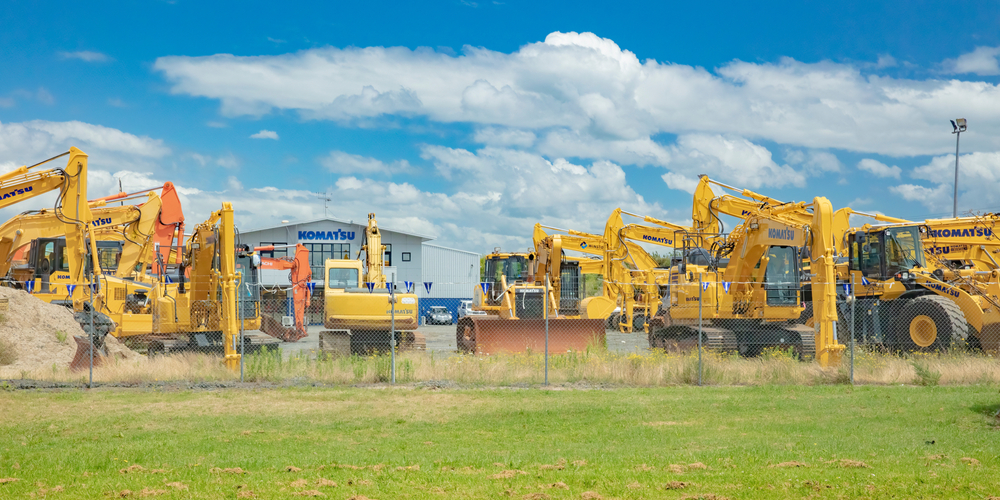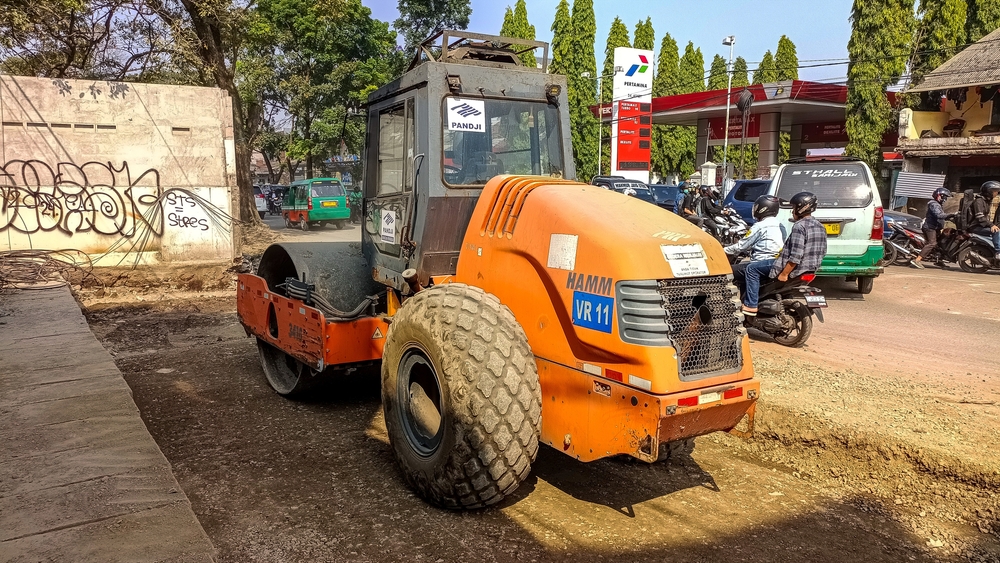Cranes stand as pivotal assets within the construction and heavy lifting industry, tasked with the monumental role of hoisting and transporting heavy loads. Engineered with complex configurations and robust designs, these machines are the backbone of projects that shape our infrastructure and skyline.
Yet, the question of what affects the amount of weight a crane can lift remains central to leveraging their full potential. Delving into the dynamics of crane configurations and designs reveals the intricacies that dictate their lifting power. Understanding these aspects is crucial for professionals seeking to optimize crane efficiency and operational safety, ensuring that every lift is executed with precision.
Understanding Crane Mechanics
The operation of cranes is deeply rooted in the principles of physics, ensuring their capability to perform lifts that are essential to construction and engineering feats. Examining these principles and their application across different crane types can help us appreciate the engineering ingenuity behind these machines.
Fundamental Physics Principles
- Leverage: Utilizes the principle of force applied at a distance from the pivot point to lift heavy loads. It is the core principle that allows cranes to lift objects much heavier than the force applied.
- Counterbalance: Essential for maintaining the crane’s stability by balancing the weight of the load against the weight of the crane itself, preventing tipping.
- Mechanical Advantage: Achieved through the use of pulleys and gears, this principle increases the effective lifting force of the crane, allowing it to hoist heavier loads with less input energy.
Crane Types and Their Mechanics
Tower Cranes
- Characterized by their vertical mast and horizontal boom.
- Primarily used in the construction of high-rise buildings.
- Their height and reach make them ideal for working in densely populated urban areas.
Mobile Cranes
- Known for their flexibility and mobility.
- Can be moved around a site or between sites, making them suitable for projects that require lifting at multiple points.
- Varieties include truck-mounted cranes, rough-terrain cranes, and all-terrain cranes.
Telescopic Cranes
- Feature extendable booms that provide a balance between reach and mobility.
- Versatile and used in a variety of scenarios, from construction sites to rescue operations.
- The ability to adjust boom length on the fly allows for precise control over lifting operations.
Application of Mechanics
Each crane type leverages these physics principles in unique ways to optimize lifting power. For instance, the design of a tower crane maximizes leverage and counterbalance through its tall mast and counterweight system, while a mobile crane’s mechanical advantage is enhanced by its hydraulic systems and mobility, allowing for quick adjustments on site.
Understanding these mechanics not only highlights the diversity in crane design and application but also underscores the importance of selecting the right crane for specific tasks.
Key Factors Influencing Crane Lifting Capacity
The ability of a crane to lift heavy loads is not merely a function of its size or the strength of its motor; several nuanced factors come into play, each contributing to its overall lifting capacity. Understanding these factors is crucial for ensuring the crane operates within its safe lifting parameters, thereby preventing accidents and optimizing performance.
Crane Configuration Factors
Boom Length: The length of the crane’s boom directly influences its reach and lifting capacity. A longer boom allows for greater reach but may compromise on the maximum weight that can be lifted due to increased load on the crane structure.
Counterweight Setup: Proper calculation and placement of counterweights are vital to balance the crane’s load. This setup prevents the crane from tipping over by offsetting the weight of the load being lifted.
Boom Angle: The angle at which the boom is set can significantly affect the crane’s lifting capacity. Optimal angles can enhance stability and maximize lifting power, while incorrect angles can reduce capacity and increase risk.
Environmental Impact Factors
Wind: Strong winds can dramatically affect crane operations, exerting additional force on the load and the crane structure. High wind speeds may necessitate operational halts or limit the weight of loads that can be safely lifted.
Ground Stability: A stable foundation is paramount for crane operation. Soft or unstable ground can risk the crane’s stability, affecting its lifting capacity and safety. Use of outriggers and mats can help distribute the crane’s load and improve stability.
Weather Conditions: Adverse weather conditions like rain, snow, or extreme temperatures can impact crane functionality and safety. These conditions may require adjustments to lifting plans or limits on lifting capacity to ensure operational safety.
Material and Construction Quality
High-quality materials and construction practices are essential for a crane’s durability and performance. The strength and resilience of the materials used in the crane’s construction affect its ability to withstand operational stresses and environmental conditions, influencing its lifting capacity and longevity.
Each of these factors plays a critical role in the safe and efficient operation of cranes. Crane operators and project managers must consider these variables when planning lifts, choosing the right crane for the job, and determining safe lifting practices.
Regular training and updates on best practices in crane operation can further ensure that all factors are appropriately managed to maximize lifting capacity while ensuring safety on the construction site.
The Role of Setup and Design in Maximizing Efficiency
Proper setup and groundbreaking design are not just enhancements; they’re essentials in maximizing a crane’s efficiency and ensuring safety. Each step, from initial site assessment to the integration of innovative materials and technologies, plays a critical role in optimizing performance.
Strategic Setup and Site Assessment
- Ground Assessment: Evaluating the stability and composition of the ground is fundamental. The assessment ensures the crane is positioned on solid footing, reducing risks and improving lifting capacity.
- Crane Placement: Strategic placement is crucial for maximizing reach and efficiency while ensuring safety. Factors such as proximity to electrical lines, other structures, and the overall site layout are considered to optimize operation.
Advancements in Materials and Design
- Materials Science Innovations: The use of high-strength, lightweight materials allows for cranes with higher lifting capacities without the penalty of increased weight. This innovation contributes to more efficient and versatile crane operations.
- Computer-Aided Design (CAD): CAD technologies enable precise modeling and testing of crane designs before physical construction. This approach allows for optimization of design for performance and safety, ensuring compliance with regulations and standards.
Practical Considerations for Operators and Engineers
The proficiency of crane operators and engineers significantly impacts the efficiency and safety of crane operations. Beyond the fundamentals of design and setup, continuous education, maintenance, and the application of modern technologies are key to enhancing operational standards.
Maintenance and Regular Checks
Comprehensive maintenance routines ensure that all crane components, from hydraulic systems to structural integrity, are in peak condition. Regular inspections and maintenance not only extend the lifespan of the crane but also prevent malfunctions that could lead to safety incidents.
Training and Expertise
Continuous training for crane operators and engineers is vital. It equips them with the knowledge to manage complex lifts and adapt to varying conditions with confidence. Expertise in crane dynamics, safety protocols, and regulatory compliance ensures that operations are both efficient and secure.
Technological Integration in Planning
- Simulation Software: Advanced simulation software allows operators to plan and visualize lifts before execution. This tool helps in identifying potential challenges and optimizing lift strategies in a virtual environment.
- Virtual Reality (VR): VR technology offers a hands-on experience in a controlled setting, enabling operators to practice and refine their skills without the risks associated with physical trials. This not only enhances safety but also efficiency, as operators can better prepare for real-world lifting scenarios.
Conclusion
Crane configurations and design play a crucial role in determining the lifting power of these essential machines. By understanding the underlying mechanics and considering key factors that influence lifting capacity, industry professionals can enhance efficiency and safety in crane operations. Thoughtful design, proper setup, and regular maintenance, combined with the expertise of trained operators, are the pillars of maximizing a crane’s lifting potential.
As the construction industry continues to evolve, the importance of staying informed about best practices in crane operation and management cannot be overstated, ensuring that these towering machines continue to lift our ambitions skyward.









